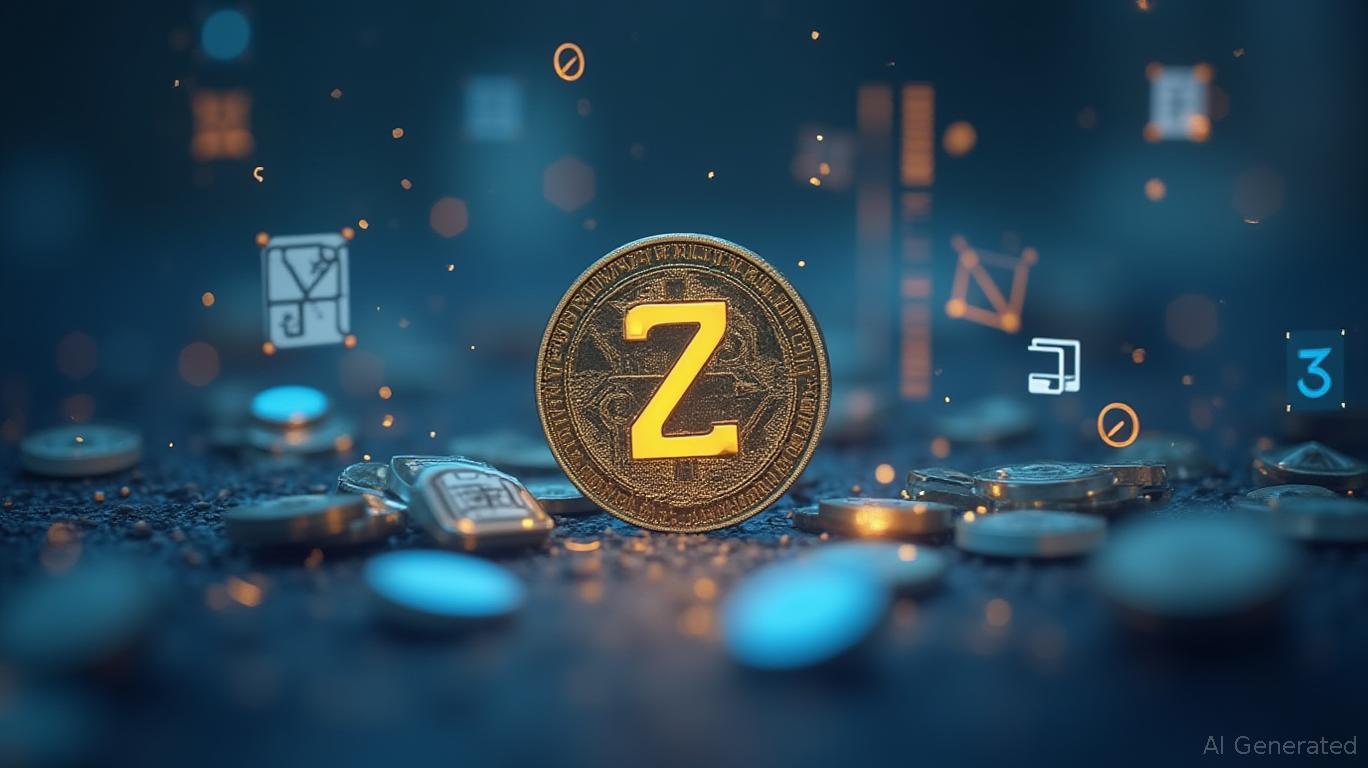Zelle Adopts Stablecoins to Address Challenges in Cross-Border Payments
- Zelle plans to expand international remittances using stablecoins, leveraging its $1T domestic transaction network and 150M users. - Backed by JPMorgan, Bank of America, and Wells Fargo, the move targets speed, cost, and compliance challenges in cross-border payments. - The initiative aligns with U.S. regulatory clarity post-GENIUS Act, positioning stablecoins as a bridge between traditional finance and blockchain. - Challenges include AML/KYC compliance and competition from PayPal, crypto-native stablec
Zelle, a peer-to-peer payment platform owned by U.S. banks, is preparing to enter the international remittance market by utilizing stablecoins—a step that could significantly alter the landscape of cross-border payments and pose new competition to established fintech companies. Early Warning Services, which operates Zelle, revealed plans to extend the network’s domestic achievements—processing more than $1 trillion annually and serving 150 million users—by delivering quicker and more affordable global money transfers, as reported by
This move is part of a growing trend in the financial sector toward stablecoins—digital assets tied to government-backed currencies like the U.S. dollar. These coins combine the dependability of fiat with the efficiency of blockchain technology and have gained more regulatory certainty in the U.S. since the GENIUS Act was enacted in July 2025, as noted by

Industry analysts believe Zelle’s timing and strategy are advantageous. Payments expert Aaron McPherson remarked that Zelle’s partnership with major banks allows it to avoid the disjointed approaches of single institutions. "This is best accomplished through collective effort, not by individual banks," he explained, adding that stablecoins’ regulatory acceptance and instant settlement features make them well-suited for international payments, as reported by Digital Transactions. With a network linking 2,300 U.S. banks and credit unions, Zelle could speed up stablecoin adoption by embedding them into existing digital banking platforms, a point raised by American Banker.
Nonetheless, there are hurdles to overcome. Ensuring compliance with anti-money laundering (AML) and know-your-customer (KYC) rules will demand strong systems, especially as Zelle deals with different regulations worldwide. Tony DeSanctis from Cornerstone Advisors cautioned that non-bank entities like PayPal or crypto-based stablecoins such as USDC may also vie for users, particularly among businesses looking for proven alternatives, as mentioned by American Banker. Furthermore, while Zelle has
This development is part of a larger shift in the sector. Rivals like PayPal and Wise are also testing stablecoin-powered remittance solutions, and reports indicate Zelle has previously weighed launching its own stablecoin, as stated by
Early Warning Services has promised to share further information in the near future, including launch schedules and technical details. For now, the announcement marks a significant milestone for stablecoins, which have reached a $312 billion market capitalization and are increasingly seen as a link between conventional finance and blockchain technology, according to Crowdfund Insider.
Disclaimer: The content of this article solely reflects the author's opinion and does not represent the platform in any capacity. This article is not intended to serve as a reference for making investment decisions.
You may also like
Bitcoin News Update: Prenetics Secures $48M Funding, Igniting Discussion on Medical Advancements and Bitcoin Market Fluctuations
- Prenetics raised $48M via equity offering to expand its IM8 supplement brand and Bitcoin treasury strategy, priced at $16.08 per unit. - The deal includes 2.99M shares and warrants with 50-100% premiums, aiming to fund IM8's $100M ARR growth and daily BTC purchases. - Market reaction was mixed, with shares down 15% premarket amid concerns over shareholder dilution and Bitcoin price volatility risks. - The offering, underwritten by Trump-backed Dominari Securities, highlights Prenetics' "health-and-wealth

Bitcoin News Update: BlockDAG Emerges as Ethereum’s Successor: $430M Presale Addresses Scalability’s $430M Challenge
- BlockDAG (BDAG) leads 2025 crypto with $430M presale, 27B tokens sold, and 4,500 dApp developers, leveraging hybrid DAG-PoW architecture to achieve 1,400 TPS. - Chainlink integrates S&P risk assessments for 2,400+ institutions while Render (RNDR) expands AI compute with H200 GPUs, projecting $6–$7 price targets by year-end. - Snorter Token (SNORT) and Bitcoin Hyper face speculation amid $5.7M and $13M presales, contrasting BlockDAG's utility-driven model with 20,000+ miners and 3.5M X1 app users. - Block

Canada Sets November Stablecoin Regulations to Prevent Capital Outflow and Safeguard National Sovereignty
- Canada’s November 4 budget will formalize stablecoin regulations as payment instruments, aligning with U.S. standards to curb capital flight to dollar-backed tokens. - Industry leaders warn delayed regulation risks Canadian bond demand, higher interest rates, and loss of monetary policy control due to U.S. stablecoin dominance. - Proposed rules include licensing, reserve requirements, and redemption terms to mitigate systemic risks, while Loon’s CAD-backed stablecoin aims to build domestic digital infras

Solana Updates Today: Blockchain Meets AI to Transform Financial Models
- Reliance Global Group adds Solana (SOL) to its digital asset treasury, expanding blockchain investments alongside Bitcoin and Ethereum. - Solana's 65,000 TPS hybrid architecture and instant finality position it as a scalable solution for enterprise blockchain adoption. - Kite AI integrates Coinbase's X402 standard for autonomous AI agent payments, enabling machine-to-machine transactions with enhanced security. - $33M funding led by PayPal Ventures accelerates Kite AI's development of AI-driven payment i
